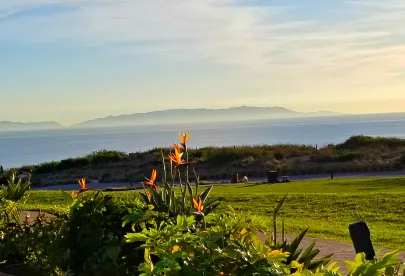On 13 January 2021, the U.S. Army Corps of Engineers (USACE) published its final rule (Final Rule) reissuing and modifying certain nationwide permits (NWP).1 The Final Rule modifies and reauthorizes NWP 48, Commercial Shellfish Mariculture Activities, and creates two new NWPs: NWP 55, Seaweed Mariculture Activities, and NWP 56, Finfish Mariculture Activities. Our prior alert discussed the revisions to NWP 48 and the proposed NWPs 55 and 56: U.S. Army Corps Proposes New Nationwide Permits for Seaweed and Finfish Aquaculture in Coastal Waters and Updated the Existing Nationwide Permit for Shellfish Aquaculture. After responding to comments, the USACE issued the final NWPs, which are very similar to the draft NWPs, with some minor modifications.
The new and revised NWPs potentially offer a more efficient pathway for aquaculture project proponents to obtain federal permit authorization. However, the Final Rule is not scheduled to become effective until after President-elect Biden takes office, raising the possibility that it could be modified or rescinded by the Biden administration or invalidated by Congress through the Congressional Review Act. Even if the NWPs become final rules, opponents of the new NWPs may still seek to challenge them in court. We discuss the changes to NWP 48, 55, and 56 below, as well as the potential procedural hurdles that must be overcome prior to the Final Rule becoming effective.
NWP 48 COMMERCIAL SHELLFISH MARICULTURE ACTIVITIES
USACE retained the most significant, and likely most controversial, change to NWP 48: removing the 1/2-acre limit for impacts to submerged aquatic vegetation in project areas that have not been used for commercial shellfish aquaculture activities in the past 100 years.2 In place of the 1/2-acre limit, USACE is substituting a preconstruction notification (PCN) requirement for new activities and existing commercial shellfish aquaculture activities seeking reauthorization that directly affect more than 1/2-acre of submerged aquatic vegetation.3 USACE notes that this PCN will provide activity-specific review of all commercial shellfish aquaculture activities that directly affect more than 1/2-acre of submerged aquatic vegetation. In conjunction with this change, USACE is removing the definition of “new commercial shellfish aquaculture operation” that was adopted in 2017, as it was applicable only to the removed 1/2-acre limit for impacts to submerged aquatic vegetation.4
USACE has also made changes to the Decision Document for NWP 48 (Final Decision Document)5 in response to the court’s ruling in Coalition to Protect Puget Sound Habitat v. U.S. Army Corps of Engineers.6 The changes included an extensive discussion of impacts from shellfish aquaculture on submerged aquatic vegetation, benthic communities, birds, fish, and other species. Ultimately, USACE concludes in the Final Decision Document that the activities authorized by NWP 48 will result in no more than minimal individual and cumulative adverse environmental effects.
The Final Decision Document also provides a more thorough discussion of how the USACE applies its two permitting authorities—Section 10 of the Rivers and Harbors Act of 1899 and Section 404 of the Clean Water Act (CWA)—to shellfish aquaculture activities.7
Generally, a Section 10 permit is required for the installation of structures or work within navigable waters of the United States.8 The Final Decision Document clarifies that most shellfish aquaculture gear, including cages, racks, nets, lines, etc., are “structures” that require a permit under Section 10.9
A permit is required under Section 404 of the CWA if the activity would result in the discharge of dredged or fill material into waters of the United States.10 The Final Decision Document states that most shellfish farms will not require a Section 404 permit.11 The Final Decision Document also clarifies that the distribution of shellfish seed and installation of shellfish gear do not constitute “fill” that requires a Section 404 permit; however, the spread of shell (without shellfish seed inside) or gravel to create suitable substrate for shellfish constitutes “fill.”12
Further, mechanical harvesting activity may require a Section 404 permit if sediment disturbed during harvesting goes beyond incidental fallback, where the harvesting activity collects sediment and deposits it in a different location.13 Activities that are not considered “dredge” or “fill” activity subject to Section 404 permitting may still be subject to Section 10 permitting as “work” in navigable waters.14
NWP 55 SEAWEED MARICULTURE ACTIVITIES
The final version of NWP 55 (titled NWP A in the proposed rule) contains only a few minor revisions as compared to the previously proposed version. Specifically, USACE removed the phrase “and work” from NWP 55 to clarify that the general permit authorizes only structures and does not authorize any of the operational aspects of seaweed aquaculture activities.15 The Final Rule also made clear that the CWA 404(b)(1) Guidelines, which relate to discharges of dredged or fill in waters of the United States, do not apply to NWP 55 because they do not authorize activities under Section 404 of the CWA.
USACE modified the final NWP to include a sentence prohibiting the use of NWP 55 for the cultivation of a nonindigenous species unless that species has been previously cultivated in the waterbody. The addition expands on the existing prohibition on use of NWP for the cultivation of an aquatic nuisance species as defined in the Nonindigenous Aquatic Nuisance Prevention and Control Act of 1990.
USACE also added a sentence to NWP 55 stating that, to the maximum extent practicable, permittees must remove authorized structures from navigable waters once they will no longer be used for seaweed aquaculture activities or multi-trophic aquaculture activities.16
NWP 56 FINFISH MARICULTURE ACTIVITIES
As with NWP 55, the final version of NWP 56 (titled NWP B in the proposed rule) preserves most of the text of the proposed rule, with only minor changes. The modifications to the final NWP 56 mirror the changes to NWP 55: USACE has removed the phrase “and work” from NWP 56 to clarify that it does not authorize any of the operational aspects of finfish aquaculture. USACE relies heavily upon the distinction between the installation of finfish aquaculture structures and the regulation of finfish aquaculture activities in responding to public comments received, many of which were related to the operational aspects of finfish aquaculture (e.g., the use of fish feed and antibiotics, the species of fish grown, potential escapement). The Decision Document for NWP 56 clarifies that these operational aspects would be reviewed and permitted by other federal agencies, such as the U.S. Environmental Protection Agency or the U.S. Food and Drug Administration. Additionally, USACE has added provisions barring the cultivation of nonindigenous species unless that species previously has been cultivated in the waterbody, and it has added a sentence requiring permittees to remove finfish aquaculture structures that are no longer in use.17
PROCEDURAL HURDLES PRIOR TO FINAL RULE IMPLEMENTATION
The finality of the NWPs is far from assured, as there are additional procedural steps and opportunity for potential review, revision, or rescission by the Biden administration and Congress prior to the date they become effective. Even if they overcome these procedural hurdles, they could be challenged in court by opponents of the new NWPs.
Review and Implementation by USACE Regions
While USACE has finalized these aquaculture permits, each individual USACE region must now review the NWPs and determine whether to modify, suspend, or revoke NWP authorizations on a regional basis. Division and district engineers have the authority to require individual permits in watersheds or other geographic areas where the cumulative adverse environmental effects are determined to be more than minimal or add conditions to NWPs either on a case-by-case or regional basis to require mitigation measures to ensure that the cumulative adverse environmental effects of these activities are no more than minimal. Given the variety of aquatic ecosystems throughout the United States, considerable variation could exist as to which regions adopt the new NWPs and what additional, region-specific conditions are imposed upon them. Most USACE regions already have circulated draft regional conditions for public comment. Final regional conditions will be issued after they are approved by the USACE region’s Division Commander. Companies interested in using NWPs 48, 55, or 56 should track any applicable regional conditions or changes to the NWPs to ensure compliance with regional terms and conditions.
Potential Modification or Rescission by the Biden Administration
The Final Rule was published on 13 January 2021. Generally, agency rules become effective at least 30 days after publication of a final rule in the Federal Register.18 Here, the Final Rule indicates that the reissuance of the NWPs will become final and effective 60 days after publication in the Federal Register, or 15 March 2021.19 Under these circumstances, the incoming Biden administration could elect to suspend the Final Rule for purposes of determining whether it should be implemented, modified, or rescinded. These types of suspensions are common during a presidential transition and may ultimately be used to rescind the rule. This could be particularly true in this case, where reauthorization of NWPs is not required until 2022, and the existing NWPs could remain in place for the rest of their five-year cycle, which commenced in 2017.
President Biden’s Chief of Staff will likely issue a regulatory freeze memorandum similar to the memo issued by Reince Priebus for President Trump, found here, and the memo issued by Rahm Emanuel for President Obama, found here. As relevant to the Final Rule, the memos generally directed federal departments and agencies to “consider” postponing for 60 days the effective dates of rules that had been published in the Federal Register but had not yet taken effect. The Final Rule has already incorporated this request, with an effective date 60 days from publication, providing time for the Biden administration to review the proposed rulemaking.
Disapproval Under the Congressional Review Act
Additionally, even if the rule were to become final, the Congressional Review Act (CRA)20 provides a mechanism by which Congress can pass a Joint Resolution of Disapproval of a final rule. The resolution must be passed by Congress within 60 days after the USACE makes its rule report to both the U.S. House of Representatives and the U.S. Senate. If signed by the president, the resolution deems the rulemaking to have no effect, and the agency may not reissue a new rule in substantially the same form. While the Democrats now control both Congress and the White House, successful use of the CRA is still not assured, as one dissenting Democrat vote in the Senate, which is split 50/50 between Democrats and Republicans, would render a Joint Resolution of Disapproval impossible. See our previous alert for additional discussion of how the CRA could be used by Congress.
Litigation over the Rulemaking Process
Barring suspension of the rule or action under the CRA, the Final Rule could still be challenged in court once it becomes effective. NWPs 48 and 56 received a number of comments opposing the proposed rules. The rulemaking was also accelerated; a little less than four months elapsed between publication of the proposed rule and publication of the Final Rule, leaving less time to consider public comment and generating criticism that the process was rushed.
CONCLUSION
NWPs 48, 55, and 56 provide opportunities for a more efficient federal permitting process for aquaculture companies; however, the ultimate fate of the NWPs is still far from certain and will likely be determined in the months ahead. Aquaculture companies should closely track implementation of these NWPs to determine if and when they will be available for use.
1Reissuance and Modification of Nationwide Permits, 86 Fed. Reg. 2,744 (Jan. 13, 2021) [hereinafter Final Rule].
2Id. at 2,787–88.
3Id. at 2,791. The 2017 versions of the NWPs reissued in the Final Rule expire on 15 March 2021. Activities authorized under the 2017 NWPs will remain authorized until 18 March 2022. The reauthorized NWP 48 and NWPs 55 and 56 issued in the Final Rule expire on 15 March 2026. Id. at 2,747. Aquaculture companies that have an existing 2017 NWP 48 should coordinate with USACE regional staff to obtain coverage under the new NWP 48, provided that it becomes effective and enforceable.
4Id. at 2,787–88.
5U.S. Army Corps Eng’rs, Decision Document Nationwide Permit 48 (2021) [hereinafter Final Decision Document, NWP 48].
6417 F. Supp. 3d 1354, 1356 (W.D. Wash. 2019).
7Final Decision Document, NWP 48 at 6.
8See 33 C.F.R. § 322.3.
9Final Decision Document, NWP 48 at 7.
10See 33 C.F.R. § 323.3.
11See Final Decision Document, NWP 48 at 12, 122.
12Id.
13Id.
14Id. at 12.
15Final Rule at 2,804.
16Final Rule at 2,864.
17Final Rule at 2,864–65.
18See 5 U.S.C. § 553(d).
19Final Rule at 2,744.
205 U.S.C. § 802.





 />i
/>i

